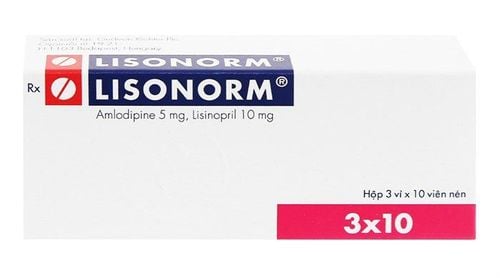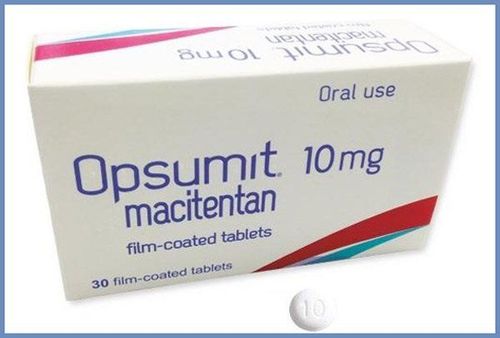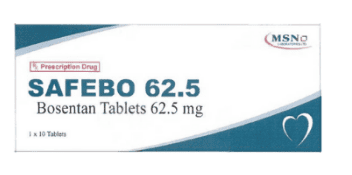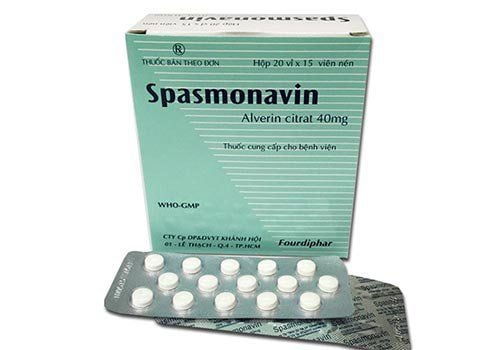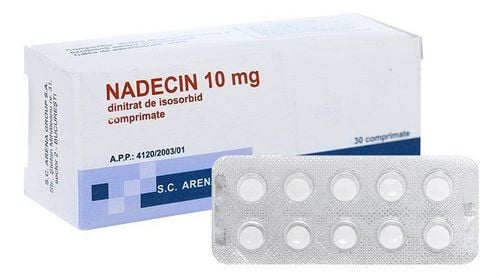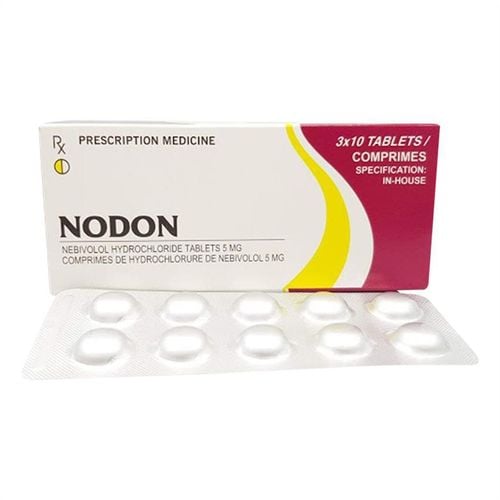This is an automatically translated article.
Trasenbin is a medicine used to treat pulmonary hypertension, helping to relieve symptoms. To understand more about Trasenbin, please refer to the article below.
1. What does Trasenbin do?
Trasenbin medicine has the main ingredient is Bosentan (in the form of Bosentan monohydrate) with a content of 62.5mg, in the form of film-coated tablets.
Endothelin - 1 (ET - 1) is a neurohormone, which exhibits effects on ETA and ETB receptor binding both internally and in vascular smooth muscle. Elevated concentrations of ET-1 in plasma and in lung tissue of patients with pulmonary arterial hypertension may suggest a pathogenic role for ET-1. Bosentan is a specific and competitive antagonist of ET-1 at the endothelin-type ETA and ETB receptors, preventing ET-1 from binding to these receptors, leading to disease. The active substance Bosentan in the study has a slightly higher affinity for the ETA receptor than for the ETB receptor.
2. Indications and contraindications of Trasenbin
Indications: Trasenbin is indicated for the treatment of pulmonary arterial hypertension to help improve exercise capacity and reduce clinical deterioration.
Contraindications:
Do not use if the patient is sensitive to Bosentan or to any component of the drug; Pregnant; Concomitant use with the drug Cyclosporin A (causes a marked increase in plasma concentrations of Bosentan), glyburic (increases the risk of increased liver enzymes). With moderate or severe liver failure, the patient has an aminotransferase 3 times higher than the normal value.
3. Dosage and how to use Trasenbin
How to use: The drug is taken orally, this tablet must be taken in the morning and afternoon, with or without food.
Dosage:
For patients over 12 years old: It is necessary to start treatment with Trasenbin 62.5 mg and take it twice a day. Then increase to 125mg twice daily after about 4 weeks of treatment. For people with low body weight (< 40 kg), the starting dose and maintenance dose should be 62.5 mg twice daily. Children: The recommended dose for children 1 month - 12 years old varies according to the child's weight. Children weighing 10 - 20 kg: Use with a starting dose of 31.25 mg / time / day, after 4 weeks of treatment increase to a maintenance dose of 31.25 mg x 2 times / day. Children weighing 20 - 40 kg: Initially 31.25 mg x 2 times / day, after 4 weeks increase to a maintenance dose of 62.5 mg x 2 times / day. Over 40kg: Use the starting dose of 62.5mg x 2 times/day. After 4 weeks increase to maintenance dose 125mg x 2 times/day. Patients with renal impairment: No dose adjustment is required. Elderly: Care should be taken in dose selection in elderly patients, taking into account the risk of decreased liver, renal or cardiac function, comorbidities or concomitant use of other medicinal products. Overdose:
In mild overdose, common side effects include mild to moderate headache, vomiting, nausea, dizziness, blurred vision, increased heart rate. Large overdose may lead to marked hypotension requiring intensive cardiovascular support. Management: The patient should be taken to a medical facility immediately for supportive treatment as there is no specific experience with Bosentan overdose.
4. Trasenbin side effects
When taking this medicine you may experience side effects including:
Commonly reported side effects include headache, nasopharyngitis, flushing, edema, hypotension, dizziness, palpitations, digestive disorders, itching, rash, fatigue, cramps, anemia. Anaphylaxis and angioedema have rarely been reported in trials. Often dose-dependent increases in liver enzymes may occur, and liver function abnormalities, cirrhosis, and liver failure have also been reported. If you experience any side effects while taking this medicine, you should tell your doctor or pharmacist for advice.
5. Things to pay attention to when using Trasenbin
Do not initiate treatment with Trasenbin if the systolic blood pressure is less than 85 mmHg.
Because Bosentan is contraindicated in patients with moderate to severe hepatic impairment. Therefore, liver aminotransferase levels should be measured prior to initiation of therapy, and continued once a month during treatment and for 2 weeks after dose escalation.
Treatment with Trasenbin should not be initiated in patients with aminotransferase levels 3 times the upper limit of the normal range. If aminotransferase levels are 3 to 5 times higher during treatment, the patient should be discontinued from Bosentan or reduce the dose and monitor aminotransferase levels closely every 2 weeks. If aminotransferase levels return to pre-treatment values, therapy can be continued or restarted, but aminotransferase levels should be checked 3 days after re-initiation, every 2 weeks, and every month. If aminotransferase levels are increased 5-8 times, Bosentan should be discontinued and aminotransferase levels monitored every 2 weeks. When aminotransferase levels return to pre-treatment values, reintroduction of treatment should be considered and considered. If liver enzyme levels are raised more than 8 times or there are symptoms of severe hepatotoxicity or 2 times higher total bilirubin, then treatment should be discontinued, supportive therapy and no reintroduction of Bosentan considered. During treatment, it is necessary to monitor hemoglobin levels after 1 and 3 months of treatment, then every 3 months during treatment. If there is a marked decrease in hemoglobin levels, further evaluation is needed to determine the cause and the need for therapy.
If signs of pulmonary edema occur while taking Bosentan, the possibility that the patient has associated pulmonary venous disease should be considered and bosentan should be discontinued.
Bosentan and other drugs with endothelin receptor antagonists are teratogenic in rats and should not be administered to pregnant women or women of childbearing potential who are not using an effective method of contraception. Contraceptive measures are essential while using this medicine.
6. Drug interactions
Drugs that can cause interactions include:
Concomitant use of a CYP2C9 inhibitor (fluconazole or amiodarone) and a strong inhibitor of CYP3A (ketoconazole, itraconazole) or moderate inhibitors of CYP3A (amprenavir, erythromycin, fluconazole) , diltiazem) with the active ingredient Bosentan may increase the plasma concentration of Bosentan. Combination is not recommended. Bosentan is an inducer of CYP3A and CYP2C9. Therefore, plasma drugs metabolized by these two enzymes will be reduced when co-administered with Bosentan. Tacrolimus: Concomitant administration of Bosentan and tacrolimus in wild animals has been shown to significantly increase the plasma concentration of Bosentan. Care should be taken if used concurrently. Glyburide: This drug increases the risk of liver aminotransferase elevations in patients receiving bosentan concomitantly. Concomitant use is contraindicated and other hypoglycemic agents should be considered. Kotoconazole: The drug increases the plasma concentration of Bosentan. No dose adjustment of Bosentan is required, but the potential for increased effects of Bosentan should be considered when administered. Simvastin and other statins: Concomitant administration reduces plasma concentrations of simvastatin and other CYP3A4-metabolized statins. The potential reduction in statin efficacy should be considered by monitoring serum cholesterol levels after initiating Bosentan and adjusting the statin dose if necessary. Sildenafil: Concomitant administration may decrease the plasma concentration of sildenafil and increase the plasma concentration of Bosentan. Caution should be exercised when using the combination, should monitor the clinical reactions and side effects, adjust the dose if necessary. Rifampicin: Concomitant administration of this drug may increase the concentration of Bosentan after the first co-administration but decrease the steady-state concentration of Bosentan. When using, it is necessary to monitor liver function weekly for the first 4 weeks, then monthly. Hormonal contraceptives such as implants, oral contraceptives: In an interaction study, it was demonstrated that co-administration of Bosentan with oral hormonal contraceptives resulted in a mean reduction in the plasma concentrations of Norethindrone and ethinyl estradiol. 14% and 31% respectively. Therefore, efficacy can be uncertain when taken with bosentan. You will need to use other effective birth control methods if co-administered. In short, the use of Trasenbin should be prescribed by a doctor and must be monitored before and during treatment with the drug to ensure safety. If there is any abnormality, please notify the doctor for advice
Please dial HOTLINE for more information or register for an appointment HERE. Download MyVinmec app to make appointments faster and to manage your bookings easily.




